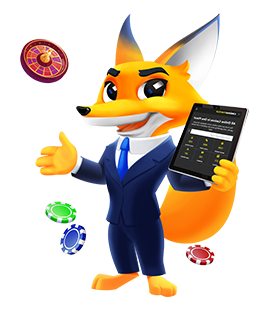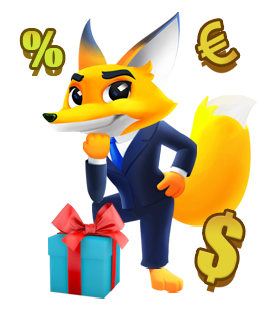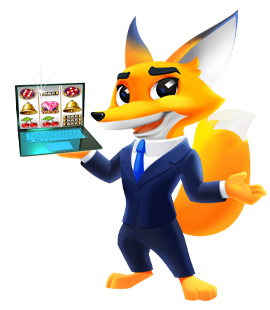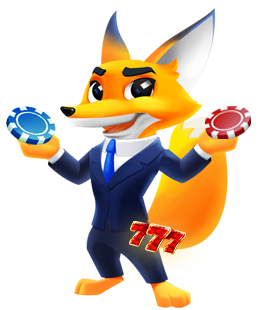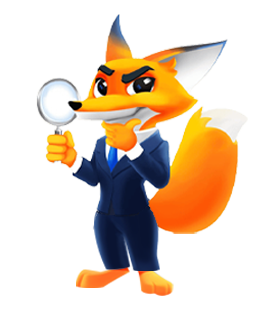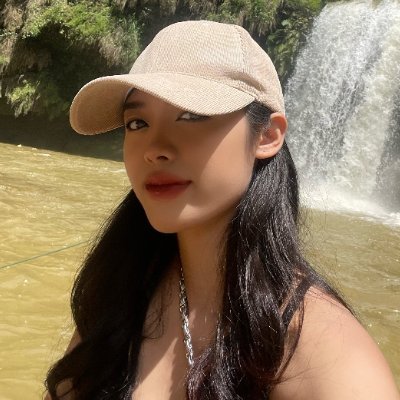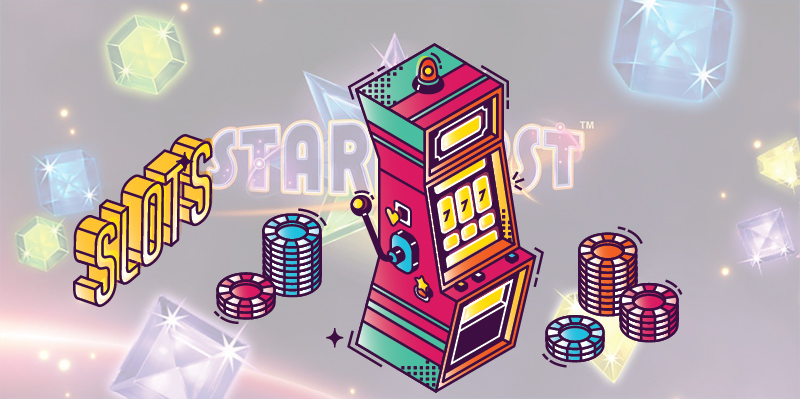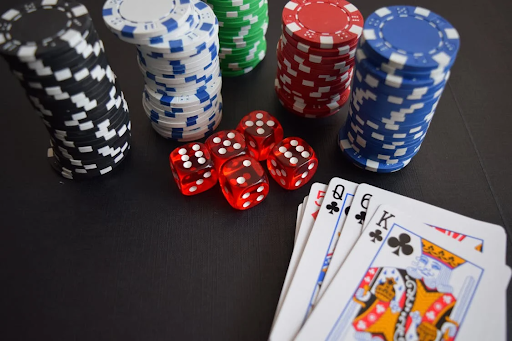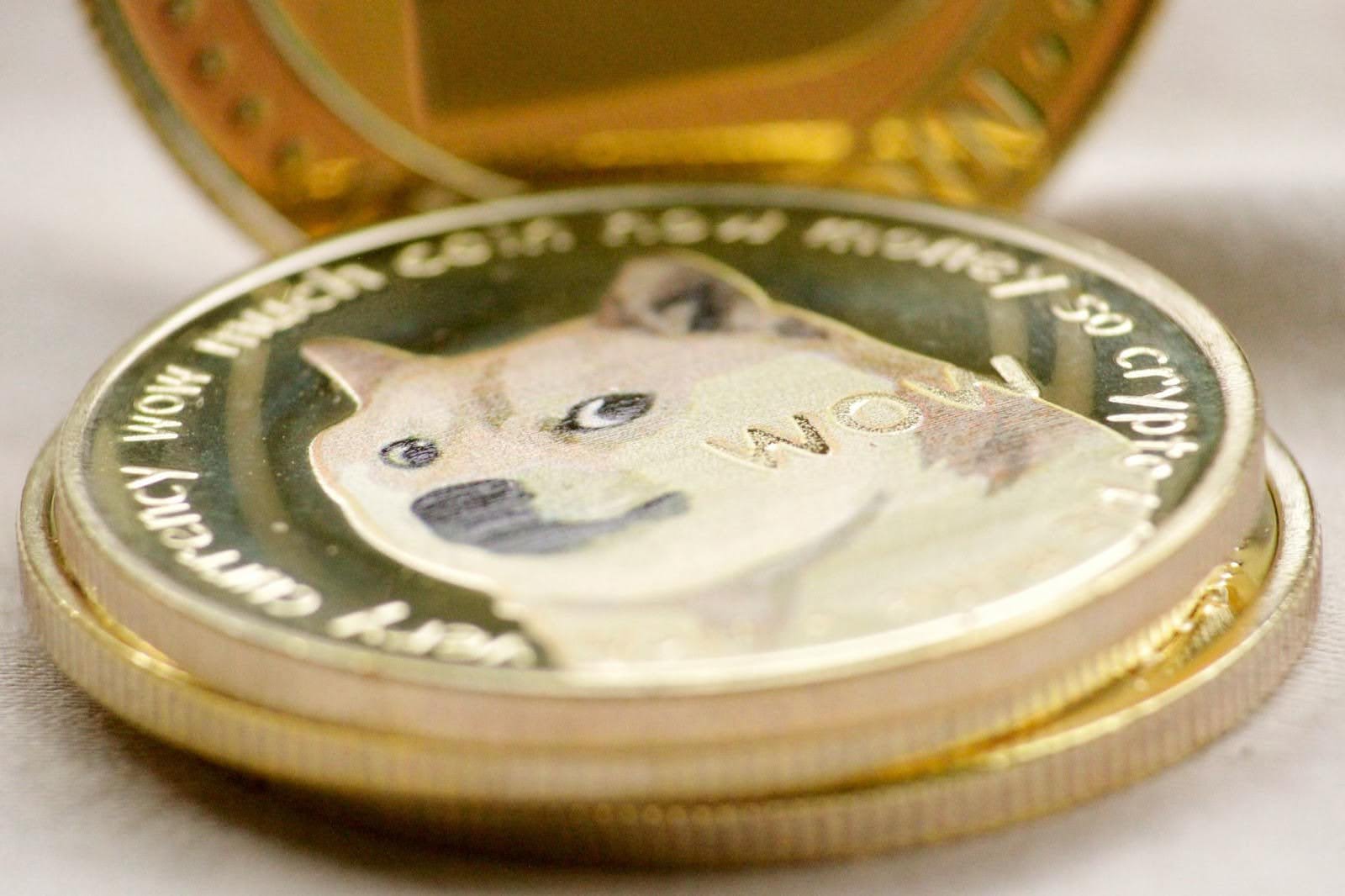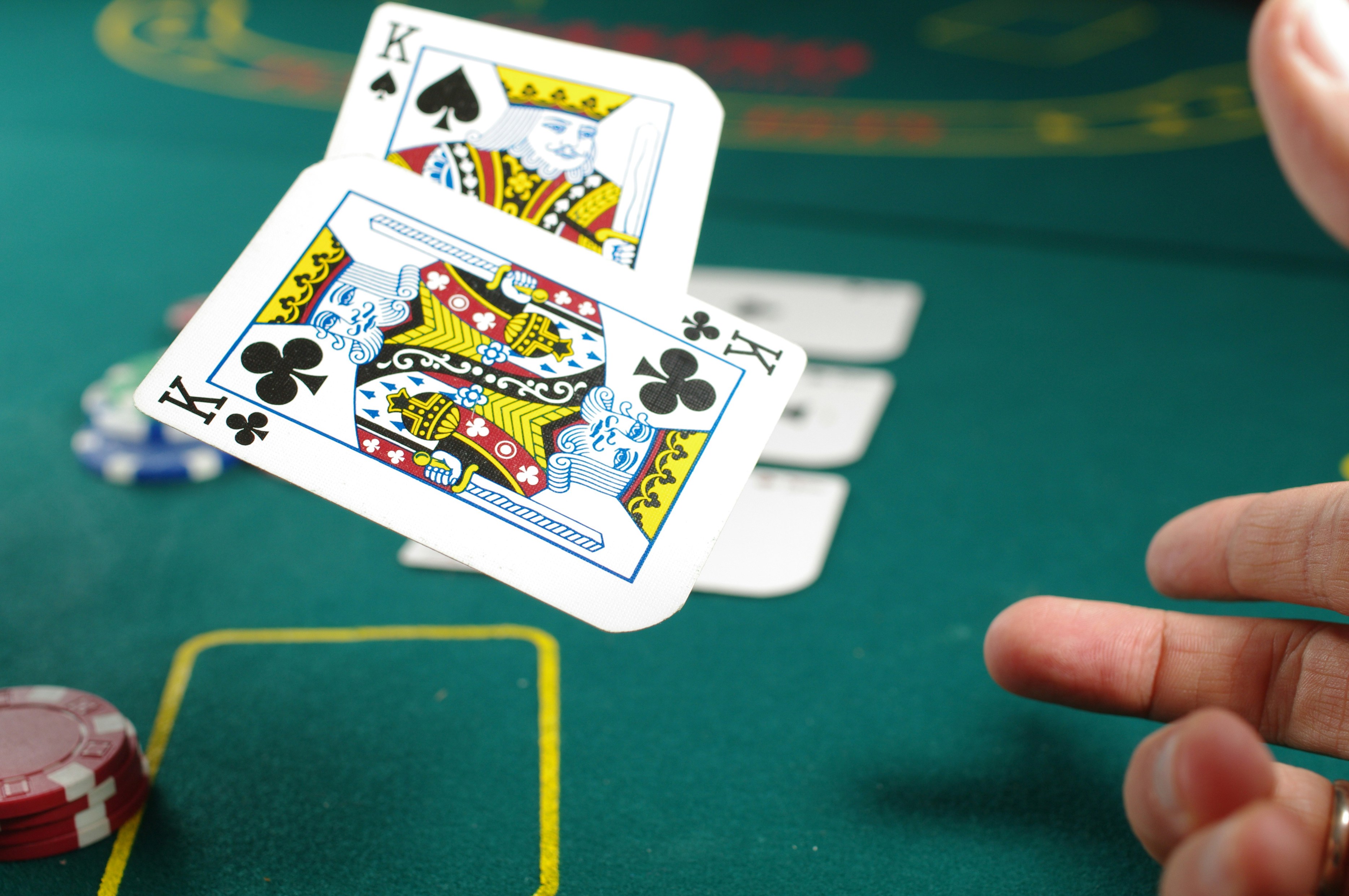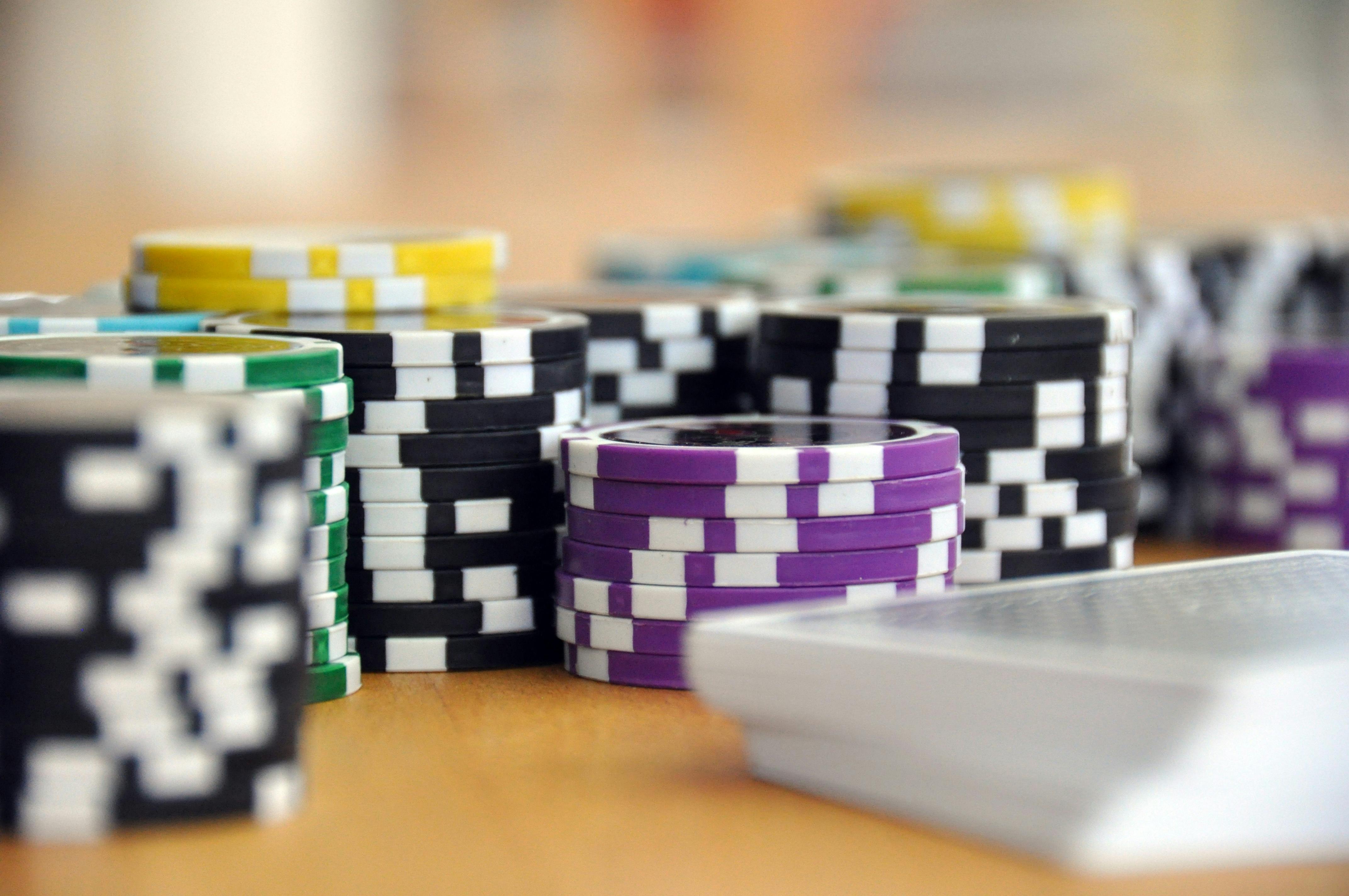Magic: The Gathering Hands-On Guide – Tips, Strategies & Beginner's Path
When I got into Magic: The Gathering (MTG), I was super excited but also totally confused. It felt like stepping into an epic battlefield, but I had no idea what I was doing. The game seemed so complex, but at the same time, so amazing.
At first, I didn’t know where to start. But soon, I learned the basics: casting spells, summoning creatures, and figuring out the different card types. Once it all started to make sense, I couldn’t get enough. The thrill of discovering new strategies kept me hooked. In this guide, I’m sharing what I’ve known to help you get started. And I’ve got tips to make the game fun and easy to dive into.
What is Magic: The Gathering?
Magic: The Gathering is the original collectible card game, first released in 1993. More than 50 million people have played Magic in over 150 countries. The game is highly customizable, so everyone can enjoy it their own way.
In Magic, you become a planeswalker, a powerful wizard battling against others. Your goal is to bring your opponent’s life total to zero. Every card you play is part of your strategy. Cards can be spells, creatures, or magical abilities you use to outsmart your opponent.
What makes Magic stand out is its rich story and incredible fantasy world. The game follows planeswalkers exploring different worlds, called planes, and these stories are told through the cards. New cards are released in themed sets, each bringing fresh stories and strategies to explore. Plus, you can play Magic with physical cards or try digital versions online.
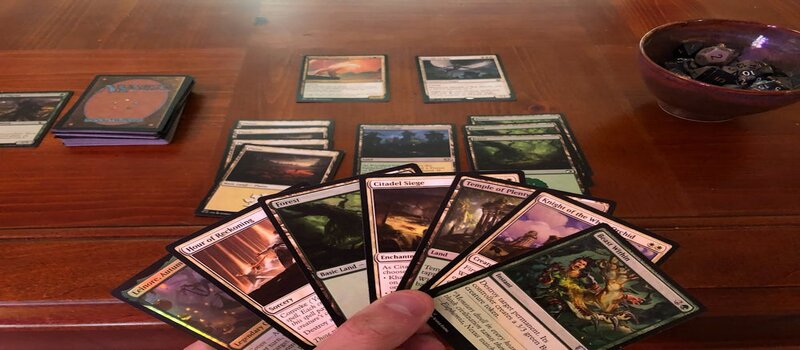
What Do You Need to Start?
To get started with Magic: The Gathering, you’ll need a deck of cards. For beginners, a pre-built starter deck is the easiest option, it’s ready to play and simple to learn with. If you’re on a budget, a deck builder’s toolkit is a great choice. These kits include everything you need to build a full 60+ card deck in various colors, plus a reusable box to store and protect your cards.
A standard deck has 60 cards, including both land and non-land cards. A good balance is 24 lands and 36 spells, but you can adjust this based on your strategy. If your deck relies on strong creatures, include more non-land cards. If you need extra mana for big spells, add more lands.
As you get more into the game, you can enhance your deck with booster packs. These packs add extra cards and open up more strategies to explore. You’ll also need dice, tokens, or a notepad to track life points and other game elements. If you prefer to play online, Magic: The Gathering Arena is a fantastic option for beginners. It’s easy to use and a great way to learn the game.
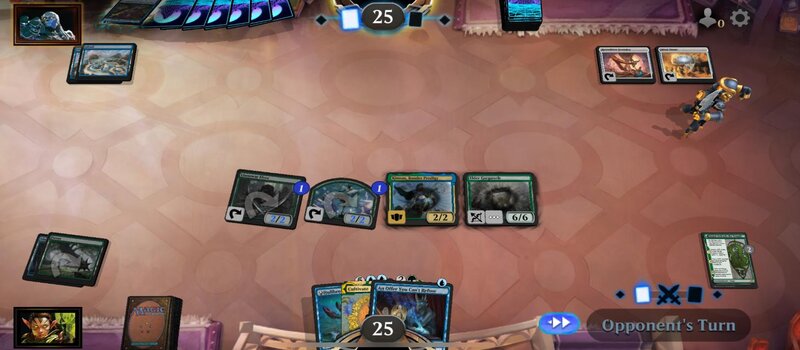
How Do You Set Up the Game?
Setting up for Magic: The Gathering is simple. First, you shuffle your deck and draw seven cards. Then, you decide who goes first by rolling a die or flipping a coin. You also need to organize your play area. You’ll need space for:
- Your deck (unused cards).
- The graveyard (discarded or destroyed cards).
- The battlefield (where you play creatures, enchantments, and artifacts).
When everything is neat and organized, it’s so much easier to follow the game and grab the cards you need. Once you’re set up, you’ll feel ready to jump in and enjoy the match!
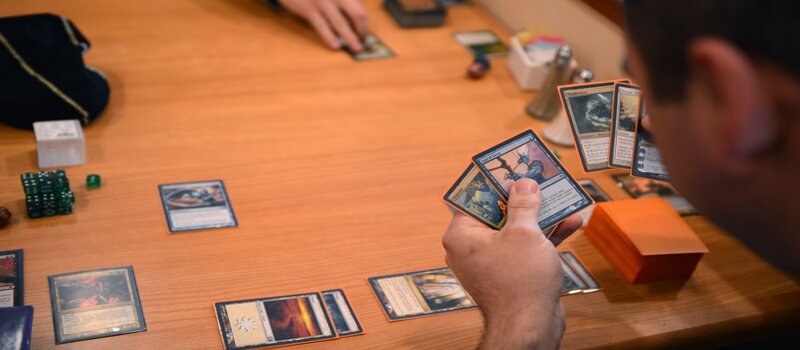
Learn the Types of Cards
There are two main types of cards in Magic: The Gathering:
- Permanents are cards that stay on the battlefield for multiple turns. These include creatures, equipment, enchantments, and artifacts.
- Non-Permanents are cards that are played once and then go straight to the graveyard. Examples are sorcery cards and instant cards.
Now, the cards are where the magic really happens. Each one represents something cool spells, creatures, lands, and more. Here’s how it works:
- Lands are your bread and butter. They’re like the fuel you need (called mana) to power everything else.
- Creatures are your team, your little or sometimes massive warriors that fight for you. They attack, defend, and bring the fight to life!
- Then there are Instants and Sorceries. These are spells that work instantly, bam, the effect happens, and then they’re gone, leaving nothing behind on the battlefield.
- Next, Enchantments and Artifacts. Those stick around to give you ongoing boosts or special effects, which can be a total game changer.
- Planeswalkers are like your ultimate allies. They are super powerful and come with a bunch of amazing abilities to help you dominate the game.
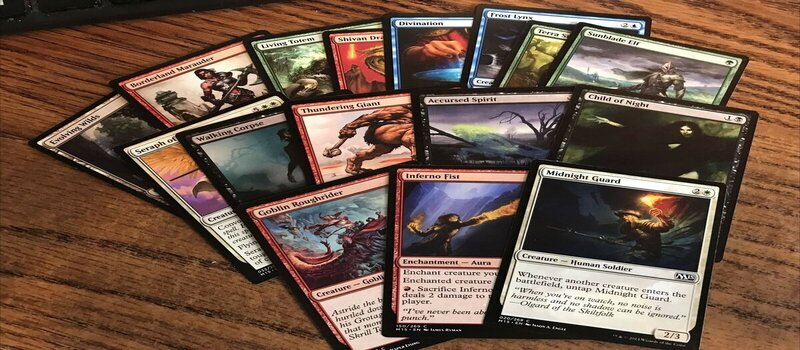
Honestly, it’s like stepping into a fantasy world where every move counts and every card could turn the tide. The strategy, the thrill, and let’s be real the drama of it all are what keep me coming back!
How Do You Play a Turn?
The game is played in turns, and each turn has several phases that help keep things organized:
- Untap Phase: This is when you untap your cards. If you’ve used any cards during the previous turn (like tapping lands for mana), you’ll flip them back to their normal position, making them ready to use again.
- Upkeep Phase: This is the start of turn phase, where you check for any effects that happen automatically at the beginning of your turn. It’s not usually super exciting, but it’s important!
- Draw Phase: This one’s easy. You draw a card from your deck. It’s a simple but important step to make sure you keep getting new options to play with.
- Main Phase 1: Here’s where things get fun. You can play lands, cast spells, and activate abilities. Just a reminder only one land per turn, but you can cast as many spells as your mana allows.
- Combat Phase: You can attack your opponent with your creatures. There are several steps in combat:
- Beginning of Combat: Check if any effects happen before combat starts.
- Declare Attackers: Decide which creatures will attack.
- Declare Blockers: Your opponent decides which creatures will block your attackers.
- Combat Damage: Damage is dealt between attackers and blockers.
- End of Combat: Combat finishes, and any remaining effects are resolved.
- Main Phase 2: This is another chance to play lands and spells. It’s like a second round to set up for the rest of the game.
- End Phase: You wrap up your turn here, resolving any end of turn effects. If you have more than seven cards in hand, you’ll need to discard down to the maximum hand size.
As for the Mana System, it took me a bit of time to fully understand, but now it’s one of my favorite parts. In Magic: The Gathering, they use a colored mana system. So, lands tap (they turn sideways) to produce mana of a specific color, and you use that mana to cast spells that match that color.
Personally, I think it's really interesting how the game uses this system to create so many different strategies and ways to play. It's fun trying to figure out the best combination of lands and spells to build a strong deck!
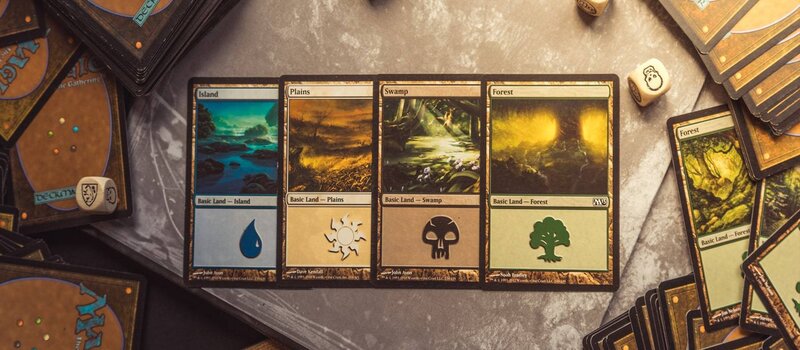
Tips for Your First Game
Here’s what I’d suggest based on my experience with Magic: The Gathering:
- Learn your colors: Each color in MTG has its own unique strengths. White, Blue, Black, Red, and Green all offer different playstyles, so I recommend taking some time to figure out which one fits your style best.
- Explore different formats: Don’t just stick to one format. MTG has modes like Commander, Draft, and Modern, each with its own set of rules. I’ve found that trying different formats really opens up new strategies and keeps things exciting.
- Join the community: If you want to level up, joining online groups or forums is a great way to meet other players and pick up new tactics.
- Check out resources: The official Magic: The Gathering website is super helpful, with a detailed rules guide and resources for beginners.
- Watch YouTube channels: There are some amazing channels like The Mana Screw and Tolarian Community College that really break down gameplay, strategies, and the rules. I’ve learned a lot from them!
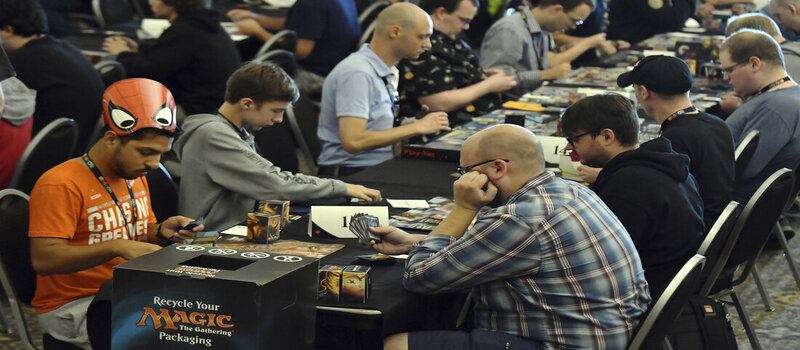
Where Can You Play MTG?
You can play Magic with friends at home, in hobby stores, or online. Local game shops often host beginner friendly events. If you prefer online games, Magic: The Gathering Arena is a great place to practice and play with others around the world.
Conclusion
Every game is a chance to learn something new. Magic: The Gathering is full of endless possibilities and strategies, and this guide is just the beginning. As you dive deeper, you'll find your own playstyle, favorite cards, and unique approach to the game.
Remember, Magic: The Gathering is full of complexity, and there’s always more to learn. Don’t be afraid to ask questions if you’re unsure about something, watch gameplay videos to pick up new tips, and experiment with different decks. It’s all part of the learning process, and you’ll grow into a Magic pro player over time!

